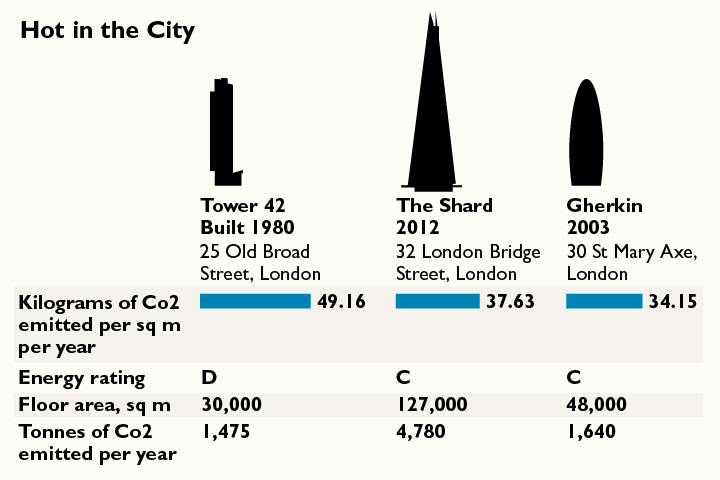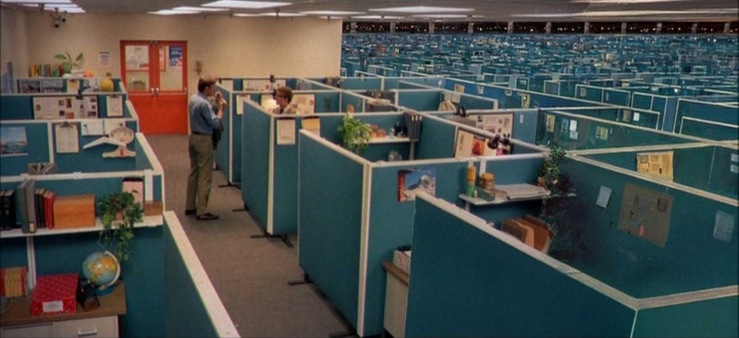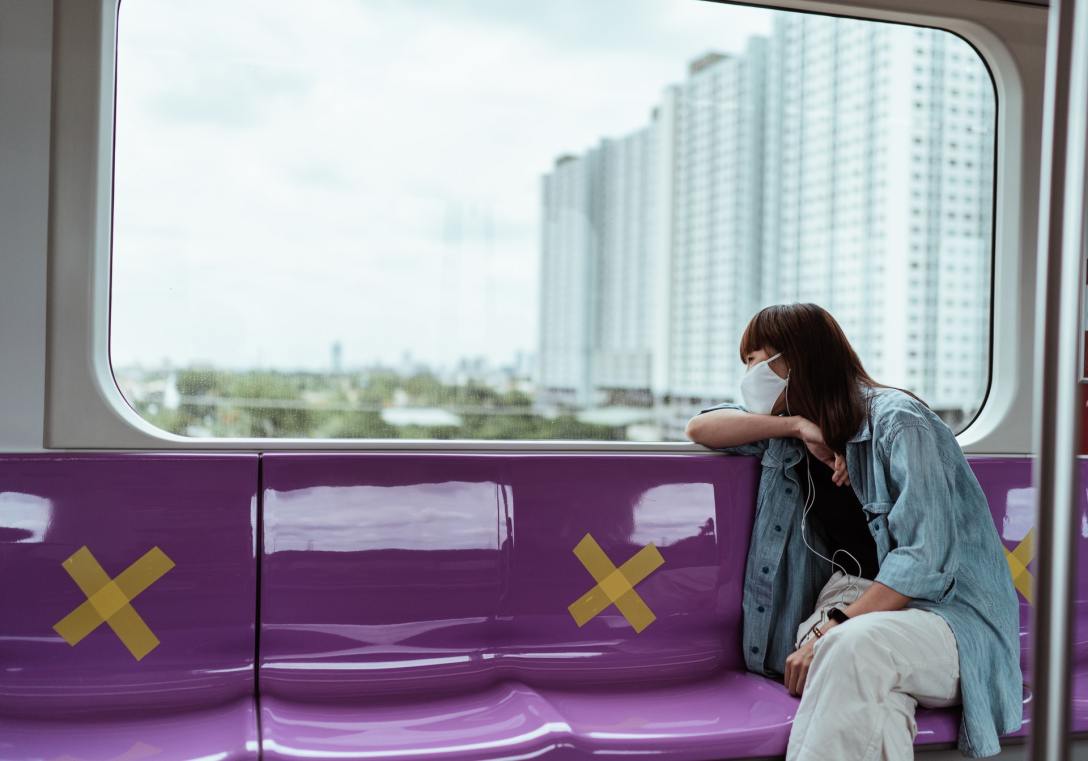Sometimes, usually while I’m occupied with a mundane activity such as pulling my groceries up the stairs or washing some dishes, I find myself thinking on just how weird the past three months have been for everyone, everywhere. The SARS-CoV-2 virus, or COVID, has struck the world and has brought disruption, chaos, unemployment, isolation, tragedy and, of course, change. The world, as a collective, has changed more significantly in the past six months than probably in the last decade or more.
We all have learned a lot about viruses: how they spread, how they affect our bodies, and how to prevent them. It’s not an unusual scene nowadays to find people wearing masks at parks and walking down the high streets all over the country, you can find all sorts of designs for masks inside buses and trains, different colors, patterns or cut typologies. Although new to the majority in the west, people have been wearing masks outside, and even inside, in some Asian countries for decades. We are now more conscious than ever about the air we breathe in and how our interior spaces affects it and, in result, how it affects our bodies. The hidden part -for the most part- of architecture and buildings has been brought to the forefront by urgency, and no bird-eye, golden hour rendering can be striking enough to remove the concerns that this pandemic has made more relevant than ever about the constrains interior and exterior spaces place on our health. Mechanical, electrical and plumbing services, sensors, CCTV, are all crucial in moving forward and obtaining our normal life back, when they were before downplayed or thought of as a commodity beyond the minimum code requirements, a hidden network of services that provides us with everything, without shining.
Sustainability guidelines are also now in splendour, when before they were just seen as an avoidable reason to increase costs. We have seen an increase in preoccupation by architects and architecture associations to work against the speeding climate change emergency. The COVID pandemic has accelerated this process and has brought forward the importance of the strategies we sometimes have to work so hard for, in order to avoid their disappearence in a VE exercise. Natural ventilation, natural light, biophilic measures and access to nature, energy and internet accessibility, close-by retail, parks and gardens accessibility within a close walking distance and the possibility to cycle around the city are all things that help our health keep in check, and our cities more sustainable, and healthier. During the last six months, when we were most of our time secluded inside, all of this became dire to us more than ever. We wished we had that green and clean city sustainability experts have been proposing for so long.
![]()
We were requested to work from home during this challenging times, when possible. To merge our office life, or persona, with our domestic life, our home persona, the one who wears slippers all the time and dress for comfort and not for acquiring business. For many people around the planet this meant isolation, they were in solitude with their belongings and their interior spaces and nothing more for months. Digital means of connecting with others raised to the issue and, suddenly, we were in the company of someone sitting far away, maybe in a different country, waving and talking to us from a flat 15inch screen in our living room, but still, many have found very difficult to find refuge in their city, that urban fabric infamous for its density, bursting with people constantly, but also ironically, where trends show an increase in isolation. From this group of people living alone, very rare few had the possibility to still contemplate at the world from a balcony or step outside into a small garden to labour and be, in full-body, outside. The majority had only the benefit of an open window and, maybe, a park within a 15 minutes walk.
Our spaces changed, radically. We improvised office spaces where we could, we created diaphanous spatial separations with sheets where possible, we filled our domestic space with foreign stationary supplies and printers and A4 reams of paper and screens, and cables and WIFI repeaters. Suddenly, working from home was not such a utopia, a delirious desire of people too lazy to dress up and show up, but a great relief from unavoidable pressures by politics not properly designed. Our homes also became nurseries, schools, bakeries and care homes. 24/7, we were testing the resilience of our homes, flowing from one activity to the other: from a videoconference with people sitting in the US, or Spain, to cooking lunch for our family, to reviewing contracts and putting kids to nap and then dinner. We were obliged to flow within one single environment between many different programs, uses that we used to experience spread throughout the city, and that used to consume our time and energy by going from one to the other, and used to contribute to our stress peaking and unhappines, streets congestion, dirtiness, frustration and a whole lot of emissions to the atmosphere. The resilience of our small spaces was proven right, humble workers for our comfort, we’ve made our homes the ultimate mixed-use building.
And it had huge benefits for ourselves and the environment. We’ve all seen the images and charts showing the drop of pollutants in the air a few weeks into the lockdown, worldwide. And recently, it was published that a single day working from home can save up to 84,000 tonnes of CO2 in New Zealand. To have a reference of the huge impact that this could have in our environment: in a year, The Shard building by Renzo Piano emits 4,780 tons of CO2. That means that a single day of working from home in New Zealand, would save the equal amount of CO2 tons of 16 Shards towers, annually.

Also, in Japan, suicides dropped by 20% in April this year, and it is attributed to the fact that people had more time to spend with families, less time commuting to work, where they spend long hours every day. The social pressure of work was released.

The way forward is going to demand changes to our social contract and changes to our buildings and cities. This pandemic has proven that a 15-minute city typology is strong in times of crisis, its a typology that works hard for its inhabitants. Our behaviour inside buildings will be monitored differently too and we will interact with buildings differently. It has been proposed that in the case of office buildings this interaction will begin during breakfast when we will be notified via a phone app, of the air quality inside the office, availability of workspaces while respecting social distancing measures, total population or if a lockdown is in place. Technology refit is underway by many landlords and developers across London, in a bid to remain an attractive offer for the future entrepreneurs looking for a healthy office space. The location, location, location mantra will not be enough anymore since we have proven that any remote location now works. We can be productive and conduct meetings and acquire business from our couch.
In this sense, buildings could become storers of big data, but not of work emails and pdfs, and model backups, but about your vitals. Your medical history could be linked to the health history your building has accumulated of you through sensors, cameras and AI. Your levels of stress, temperature, BMI, and other types of measurable vitals could be comprehensively measured and accumulated. Maybe, in the future, an AI could inform you, before you even know it, that you have a new mole in the back of your neck that needs checking, or that your levels of stress have risen recently to severe, unhealthy levels. Maybe your building will be able to send you home to rest before allowing you in back again? Like a HAL9000, an artificial intelligence controlling the whole of the building and with access to our vitals, we could be denied entry at the doors with a robotic voice coming out of the PA systems: «I’m sorry, (your name). I can’t do that». Of course, this is all very speculative out-loud thinking. But nevertheless, some building managers appointed by office space landlords are already receiving a power increase over their tenants. They can conduct temperature checks and, based on their readings, they will decide if people can come in or not. Open-plan offices are also under scrutiny, even since before the pandemic when a Harvard team analyzed the impact this type of order had in office interactions. Social distancing measure might be the tipping point for offices to reconsider a model with cubicles, or other type of more private spaces.

Cities will need a refit too. For most people living in cities during lockdown, a supermarket or grocery store or a park was within a short walking distance. But people living in the suburbs were challenged by the sprawl of houses and were pushed to drive more often for their daily needs. A trip to the groceries store first, then another one for a takeaway and then one more to buy some aspirins at the pharmacy. All of this used to be accomplished with a single trip to the city when driving to work, people would do their shopping on the same trip rather than multiple ones. Monocentric type of cities has long been debated and used as an example of unsustainable development because of this and many other reasons. Making everything farther away will of course force you to use more of your private car, and walk and cycle less. In the polycentric type of city, your work, your stores and recreation spaces are all located within walking distance from your home or are easily accessible by cycle or public transport. On the other side, density has been always linked with disease and the adverse city effect of temperature raising during summer, crime and increasing isolation, abandonment of failed retail followed by derelict no-go zones in fast intervals. Both models have benefactors and detractors, haters and lovers, but it is clear our urban centres need to facilitate interaction in a safe way from now onwards, clean transportation, places for people to gather and form a community and interact with each other. Solidarity played a huge role during this pandemic in cities, because they facilitated the reaching out for others. In cities, you are more likely to be aware of who your neighbours are and which ones would probably be shielding. It is easier to positively affect many their lives when they are living in the same building as you are, or the next one, than if they live somewhere in the suburb you need to drive to. Myself, many times since March, I received offers of help in my letterbox by volunteers, searching for senior citizens shielding. They were offering help to bring groceries or company. It’s hard to imagine the same impact walking around in a suburb, placing flyers in letterboxes that belong to a single-family.

Other changes will include how tourists arrive, explore and experiment with our cities. And how we can go back to being tourists. How migrants and the gig economy can cope with close borders and lockdown is another question that will require long thinking. COVID might have the effect of creating a more local economy rather than a globalized one, which will impact the city dynamics of work, work seekers and international work bidding.
It surely won’t be last time I will be thinking about this post-COVID new normal. New ideas and innovation will continue to sprout from this crisis as more information is available, and a new layer will be introduced in the design process and considerations of buildings and cities. And I think it will be for the better.
